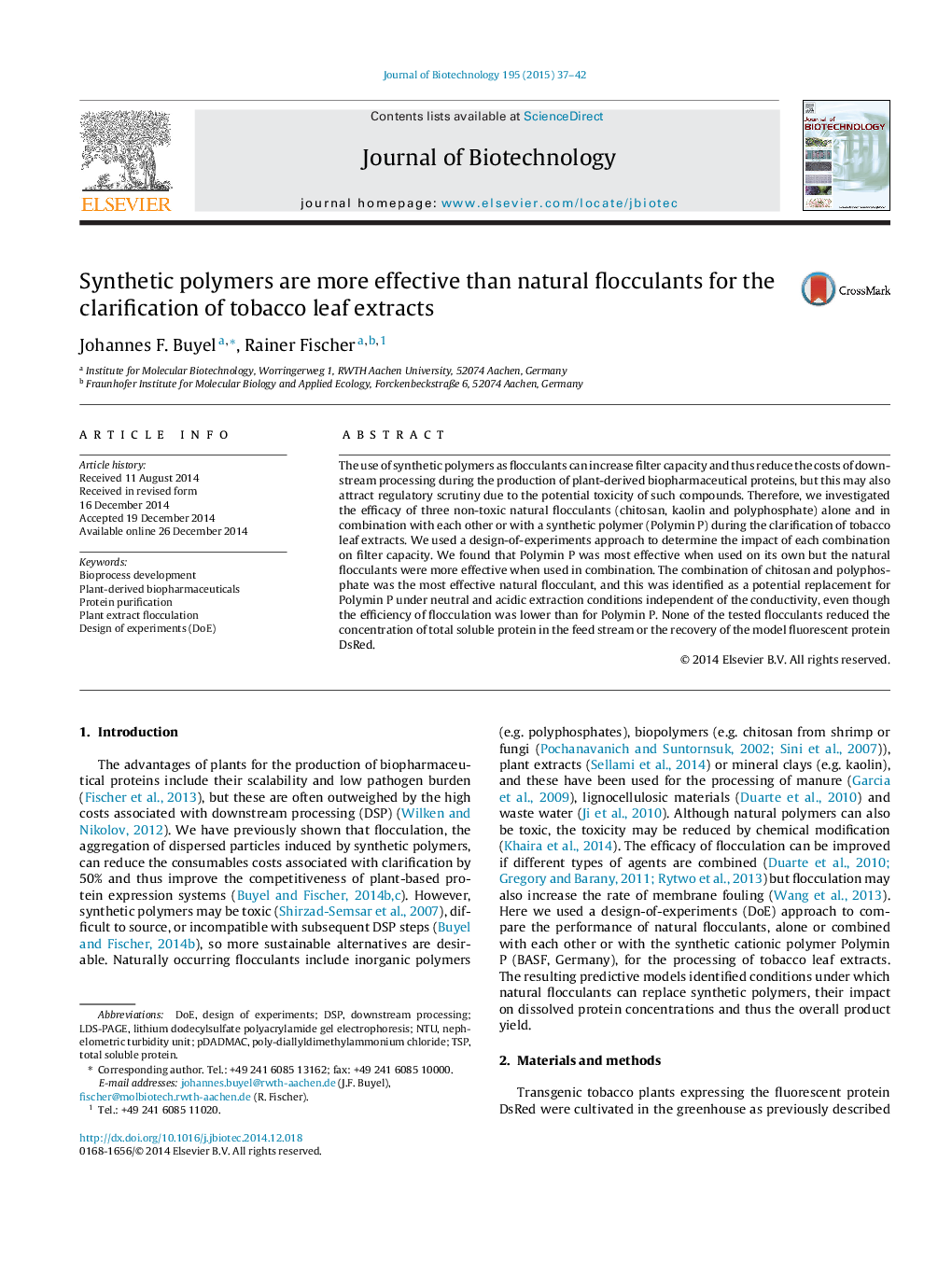| کد مقاله | کد نشریه | سال انتشار | مقاله انگلیسی | نسخه تمام متن |
|---|---|---|---|---|
| 22937 | 43401 | 2015 | 6 صفحه PDF | دانلود رایگان |
• Synthetic flocculants can be replaced by non-toxic, natural counterparts.
• A combination of chitosan and polyphosphate was the most effective natural flocculant.
• A polyethylenimine was the most effective flocculant.
• Protein yields were not affected by flocculation.
• Complex factor interactions were characterized by design of experiments.
The use of synthetic polymers as flocculants can increase filter capacity and thus reduce the costs of downstream processing during the production of plant-derived biopharmaceutical proteins, but this may also attract regulatory scrutiny due to the potential toxicity of such compounds. Therefore, we investigated the efficacy of three non-toxic natural flocculants (chitosan, kaolin and polyphosphate) alone and in combination with each other or with a synthetic polymer (Polymin P) during the clarification of tobacco leaf extracts. We used a design-of-experiments approach to determine the impact of each combination on filter capacity. We found that Polymin P was most effective when used on its own but the natural flocculants were more effective when used in combination. The combination of chitosan and polyphosphate was the most effective natural flocculant, and this was identified as a potential replacement for Polymin P under neutral and acidic extraction conditions independent of the conductivity, even though the efficiency of flocculation was lower than for Polymin P. None of the tested flocculants reduced the concentration of total soluble protein in the feed stream or the recovery of the model fluorescent protein DsRed.
Journal: Journal of Biotechnology - Volume 195, 10 February 2015, Pages 37–42
